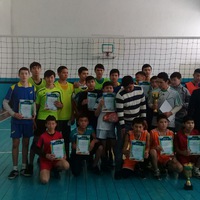
Какую роль выполняли загадки в древнем обществе? Как изменились их функции в наше время? Вспомните
несколько загадок, созданных на основании внешнего сходства предметов или явлений. 0
0
 0
0
Ответы на вопрос
 Внимание! Ответы на вопросы дают живые люди. Они могут содержать ошибочную информацию, заблуждения, а также ответы могут быть сгенерированы нейросетями. Будьте внимательны. Если вы уверены, что ответ неверный, нажмите кнопку "Пожаловаться" под ответом.
Внимание! Ответы на вопросы дают живые люди. Они могут содержать ошибочную информацию, заблуждения, а также ответы могут быть сгенерированы нейросетями. Будьте внимательны. Если вы уверены, что ответ неверный, нажмите кнопку "Пожаловаться" под ответом.

 0
0
 0
0

Role of Riddles in Ancient Society
In ancient societies, riddles played various roles and held significance in different cultural contexts. Here are some of the roles that riddles fulfilled in ancient societies:
1. Entertainment and Social Interaction: Riddles were often used as a form of entertainment during gatherings and social events. They provided amusement and engaged people in intellectual challenges, fostering social interaction and creating a sense of community.
2. Oral Tradition and Cultural Transmission: Riddles were an integral part of oral tradition, serving as a means of passing down cultural knowledge, wisdom, and values from one generation to another. They were used to teach moral lessons, share folklore, and preserve cultural heritage.
3. Mental Stimulation and Problem-Solving: Riddles served as mental exercises, challenging individuals to think critically, use logic, and solve complex problems. They stimulated cognitive abilities, sharpened wit, and encouraged creative thinking.
4. Symbolism and Metaphor: Riddles often employed symbolism and metaphorical language, allowing individuals to express abstract concepts, emotions, and ideas in a poetic and enigmatic manner. They provided a platform for symbolic communication and artistic expression.
5. Initiation and Rite of Passage: In some cultures, riddles were used as part of initiation rituals and rites of passage. Solving riddles successfully demonstrated a person's intellectual maturity, problem-solving skills, and readiness to assume certain roles or responsibilities within the community.
Evolution of Riddles in Modern Times
In modern times, the functions and uses of riddles have evolved. While some traditional roles remain, new functions have emerged due to changes in society and technology. Here are some ways in which the functions of riddles have changed:
1. Entertainment and Recreation: Riddles continue to serve as a source of entertainment and recreation. They are popular in various forms of media, such as books, games, and online platforms. Riddles are often used in social gatherings, parties, and team-building activities to engage and entertain participants.
2. Educational Tool: Riddles are now widely used as an educational tool in schools and learning environments. They promote critical thinking, problem-solving skills, and language development. Riddles can be incorporated into lesson plans to make learning more interactive and engaging.
3. Brain Teasers and Puzzles: Riddles have become a part of the broader category of brain teasers and puzzles. They are used to challenge and stimulate the mind, providing a fun way to exercise cognitive abilities and improve mental agility.
4. Social Media and Online Communities: With the rise of social media and online communities, riddles have found a new platform for sharing and solving. Online forums, websites, and social media groups dedicated to riddles allow people from different parts of the world to connect, share riddles, and collaborate on solving them.
Examples of Riddles Based on External Similarities
Riddles often rely on the external similarities between objects or phenomena to create a puzzle. Here are a few examples:
1. What has a heart that doesn't beat? - Answer: A deck of cards - Explanation: A deck of cards has a heart suit, but the cards themselves do not have a beating heart like a living organism.
2. I speak without a mouth and hear without ears. I have no body, but I come alive with wind. What am I? - Answer: An echo - Explanation: An echo is a sound that is reflected off surfaces and heard again, even though it does not have a physical form.
3. I have cities but no houses, forests but no trees, and rivers but no water. What am I? - Answer: A map - Explanation: A map represents geographical features such as cities, forests, and rivers, but it is a two-dimensional representation and does not have physical elements.
These riddles rely on the external similarities between objects or phenomena to create a sense of mystery and challenge the solver's perception and logical thinking.
Remember, riddles can have multiple interpretations, and the answers may vary depending on cultural context and personal perspectives.
 0
0
 0
0
Топ вопросов за вчера в категории Другие предметы
Последние заданные вопросы в категории Другие предметы
-
Математика
-
Литература
-
Алгебра
-
Русский язык
-
Геометрия
-
Английский язык
-
Химия
-
Физика
-
Биология
-
Другие предметы
-
История
-
Обществознание
-
Окружающий мир
-
География
-
Українська мова
-
Информатика
-
Українська література
-
Қазақ тiлi
-
Экономика
-
Музыка
-
Право
-
Беларуская мова
-
Французский язык
-
Немецкий язык
-
МХК
-
ОБЖ
-
Психология
-
Физкультура и спорт
-
Астрономия
-
Кыргыз тили
-
Оʻzbek tili

















